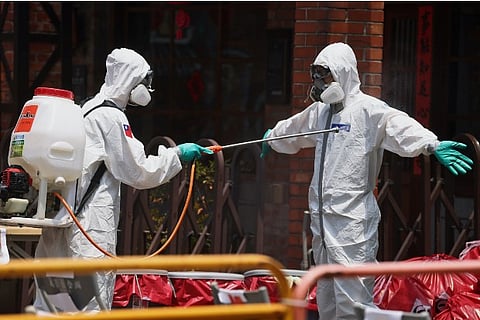

Chennai
As the number of cases of the rapidly-spreading Omicron variant of the coronavirus surges across India, with the caseload hitting 1,700 on Sunday, the Centre embarked upon the next phase of its strategy to contain COVID-19 extending vaccine coverage to youngsters in the age group of 15-18 (with Covaxin), and disbursing booster shots to frontline and healthcare workers, as well as to senior citizens with comorbidities. Following the registration of children in the aforementioned age group commencing on Sunday, Tamil Nadu’s Health Department has opened 460 sites where these inoculations can be carried out. Detailed instructions have been given to district level health officials to cater to the needs of the estimated 33.46 lakh eligible children in the State. The exercise kicked off on Monday under the aegis of Chief Minister MK Stalin.
These developments have come in the wake of India’s drug regulator granting emergency use authorisation to the indigenously manufactured Covaxin for children over the age of 12. Covaxin is only the second vaccine after Zydus Cadila’s vaccine to get the green light for restricted use among those aged 12-18. One of the salient points highlighted by PM Modi focussed on the regulatory nods to be given shortly to a nasal vaccine for COVID-19 as well as the world’s first DNA-based vaccine. While experts have spoken about how the booster shot could lower the risk of hospitalisation or severe disease in those infected, Chennai is demonstrating how two shots of the coronavirus vaccine offer no real guarantees for keeping Omicron at bay.
Criticisms against the Centre’s decision to inoculate teenagers have also been levelled by a senior epidemiologist at AIIMS. Dr Sanjay K Rai, the President of the Indian Public Health Association has emphasised that data pertaining to nations that have already begun inoculating children must be analysed before India embarks on such an exercise. Rai pointed to data available in the public domain which says that severity of infection among children is very low and just about 2 deaths per million of a population has been reported which does not justify their inoculation as of now.
However, the move to inoculate the youth has been welcomed in several countries with many parents feeling safer that their children will not be at high risk of contracting the virus. And this is a reassurance that is much needed, especially when faced with the newest variant Omicron, which seems to be more infectious, but thankfully less deadly. Two weeks ago, it was reported how nearly 100 people, including doctors, nurses and medicos, tested positive for COVID at a government general hospital in Chennai. Of these, as many as 39 individuals were suspected to have the S-Gene drop, an indicator of them being potentially infected by the Omicron variant. None of those infected had a travel history, and they all shared a milder form of the infection and are stable. The fact that they all contracted the infection from one patient speaks volumes about the transmissibility of Omicron.
It might be too early to have any substantial or quantifiable information in terms of the impact of Omicron on those who were inoculated with Covishield, Covaxin or Sputnik. But what is clear is the speed at which Omicron has been spreading, and leading to breakthrough infections. While the Centre has always been prioritising senior citizens, it’s a welcome move that the youth is also coming under the vaccine umbrella.
Visit news.dtnext.in to explore our interactive epaper!
Download the DT Next app for more exciting features!
Click here for iOS
Click here for Android